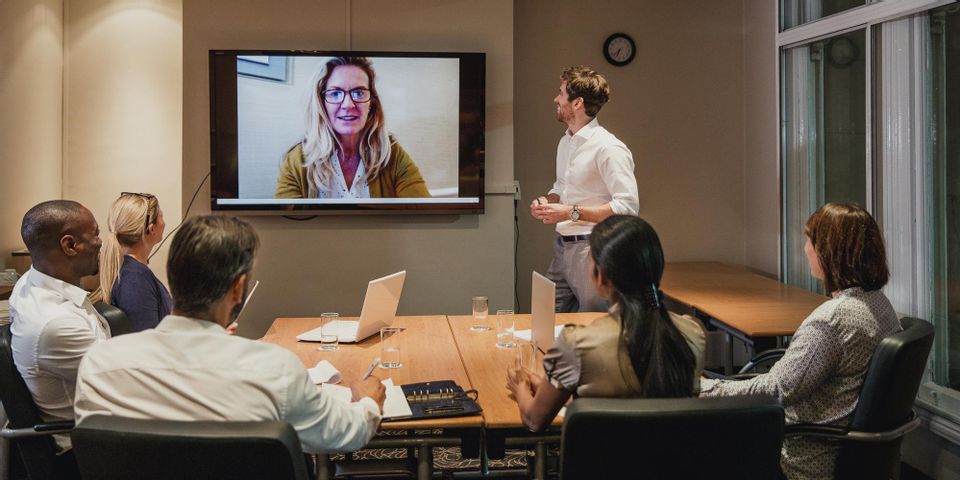A Buying Guide for Business Video Projectors

Video projectors are becoming increasingly popular in business environments. These devices project a large image from a computer or phone screen so that everyone in a meeting can easily see it. With so many different projectors available, it’s difficult choosing the right one for your needs. This guide will explain how one will help your business and provide tips for selecting the best one.
Reasons to Get a Video Projector
Using a projector makes meetings and presentations more effective. Rather than simply talking to a disengaged audience, you use the projector to draw people into the presentation.
Many options have interactive features that allow you to draw on the screen or move components of the presentation around in real-time. Not only does this improve engagement, but it also encourages collaboration. Since everyone will always be at the same part of the presentation, it is easier to share ideas and brainstorm while the presentation is ongoing.
Another reason people purchase projectors is because of the long-term cost savings. While it does require an initial upfront investment, once you have a projector, you won’t have to spend money on expensive hard copies of the presentation. This saves you money on print costs and reduces your environmental impact.
How to Choose the Right Projector
 The three main factors that dictate what type of projector is best for your needs are native resolution, brightness, and throw distance. Native resolution refers to the number of pixels the projector uses to create the image. The more pixels you have, the clearer the picture will be.
The three main factors that dictate what type of projector is best for your needs are native resolution, brightness, and throw distance. Native resolution refers to the number of pixels the projector uses to create the image. The more pixels you have, the clearer the picture will be.
If you plan on using the projector for basic Word or PowerPoint documents, you can get by with an XGA or SVGA projector, which has a resolution of 1024x768 and 800x600, respectively. However, if you’re projecting large, complex images, you need an HD projector with a resolution of at least 1920x1200.
The amount of light the projector puts out is referred to as its brightness, and it’s measured in foot-Lamberts. Rooms that are dark and have minimal ambient light can get by with a lower amount of foot-Lamberts. However, if the room is bright with lights you can’t control, you’ll need one that is brighter.
The size of the room will determine the throw distance you need, which refers to how far the image can be projected before it loses its clarity. If the projector is 7-8 feet away from the screen, it needs a standard throw distance. Short throw projectors are better when they’re 3 feet away, and an ultra-short one is ideal when it’s 2 feet from the screen.
For more help finding the right video projector for your business, contact the experts at Claiborne Sharp Professional Audio in Shreveport, LA. This full-service audio and video company has more than 30 years of experience in installing high-end video technology, and they will match you with the perfect projector. Learn more online, or call (318) 861-5953 to schedule an appointment.
About the Business
Have a question? Ask the experts!
Send your question

